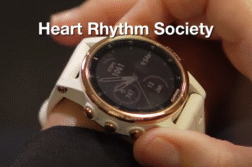SAN ANTONIO, Texas (Ivanhoe Newswire) – Aortic dissection is a tear in the aorta — the largest artery in the body. Because the aorta carries blood from the heart to the circulatory system, when it splits open, it usually means sudden death. For some patients lucky enough to make it into an operating room, surgeons are utilizing a ‘super cool-down’ of the body. Heart surgery
Cardiothoracic surgeon at Baptist Health System in San Antonio, Texas, Truc Ly, MD, explains, “Fifty percent of the time, people who present with dissection don’t make it to the hospital. Of the people who do make it to the hospital, only half of those survive.”
This means time is critical.
“The way we’ve gotten better results is understanding how to protect the brain during surgery. What we call antegrade cerebral protection,” Dr. Ly further explains.
Doctors do this by using hypothermia induction, which is cooling the body to preserve the brain during heart-lung bypass.
Dr. Ly says, “This what we call hypothermic circulatory arrest, it’s where we cool the body down and stop all blood flow to the rest of the body.”
Sandra Fernandez loves to spend time in her kitchen, but recently, surgeons needed to treat an aortic aneurysm. Dr. Ly removed Sandra’s aneurysm and replaced her heart valve during the operation. Doctors induced hypothermia to protect her brain function.
“Whatever we’ve been able to fix, will stay that way for the rest of her life,” Dr. Ly reassures.
Sandra woke up in recovery to a very happy family. Now, she’s enjoying life, cooking for her kids using her grandmother’s precious recipes.
“I feel happy because I say, ok, I’m here again, I survived!,” Sandra exclaims.
Acute aortic dissection can be sudden and is marked by intense chest pain. Each hour that someone delays going to the hospital, the mortality rate increases by one percent.
Contributors to this news report include Donna Parker, Producer; Bruce Maniscalco, Videographer; Roque Correa, Editor.
To receive a free weekly e-mail on medical breakthroughs from Ivanhoe, sign up at: http://www.ivanhoe.com/ftk
MEDICAL BREAKTHROUGHS
RESEARCH SUMMARY
TOPIC: PROTECTING THE BRAIN DURING SURGERY TO FIX THE HEART
REPORT: MB #5125
BACKGROUND: An aortic dissection is a serious condition in which a tear occurs in the inner layer of the body’s main artery, the aorta. Blood rushes through the tear, causing the inner and middle layers of the aorta to split. If the blood goes through the outside aortic wall, aortic dissection is often deadly. The incidence of aortic dissection is estimated to be 5-30 cases per 1 million people per year. Aortic dissection occurs once per 10,000 patients admitted to the hospital; approximately 2000 new cases are reported each year in the United States.
https://emedicine.medscape.com)
DIAGNOSING: The most common characteristic of aortic dissection is its abrupt start. It can happen at any time, while doing anything, or at rest or when you’re sleeping. Common signs and symptoms include sudden severe, sharp pain in your chest or upper back; also described as a tearing, stabbing, or ripping feeling, shortness of breath, fainting or dizziness, low blood pressure, rapid weak pulse, loss of vision, and/or stroke symptoms, including weakness or paralysis on one side of your body, trouble talking. Aortic dissection must be diagnosed quickly in case immediate surgery is needed. The healthcare team needs to determine if you have aortic dissection or other health conditions, such as heart attack and stroke, which produce similar symptoms. Tests that may be ordered include chest X-rays, computed tomography (CT) scans, transthoracic echocardiogram, transesophageal echocardiogram (TEE), or magnetic resonance imaging (MRI).
(Source: https://my.clevelandclinic.org/health/diseases/16743-aortic-dissection)
NEW TECHNOLOGY: Although once considered an operation that should be done by a qualified cardiac surgeon, it still remains one of the highest-risk procedures. The best results are achieved in centers that provide a specialized aortic service. Cedars-Sinai has developed such a service—the Cedars-Sinai Specialist Aortic Service (CSSAS). It goes beyond the expertise of the individual cardiac surgeons who provide the dedicated on-call rotation for aortic dissection. CSSAC is comprised of highly specialized anesthesiologists, perfusionists, intensivists, cardiologists, and vascular surgeons.
(Source: https://www.cedars-sinai.org/blog/aortic-service-and-acute-aortic-dissection.html)
FOR MORE INFORMATION ON THIS REPORT, PLEASE CONTACT:
Natalie Gutierrez
(210) 260-7250
Natalie.gutierrez@baptisthealthsystem.com
If this story or any other Ivanhoe story has impacted your life or prompted you or someone you know to seek or change treatments, please let us know by contacting Marjorie Bekaert Thomas at mthomas@ivanhoe.com



